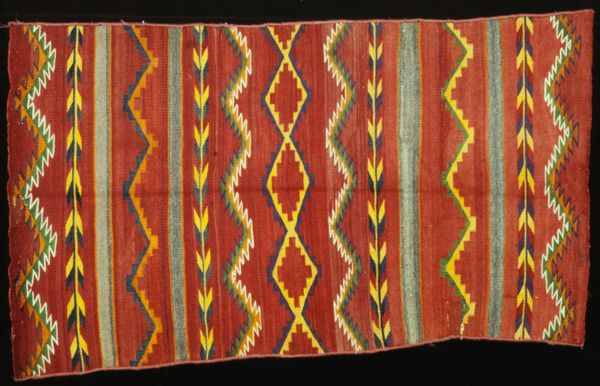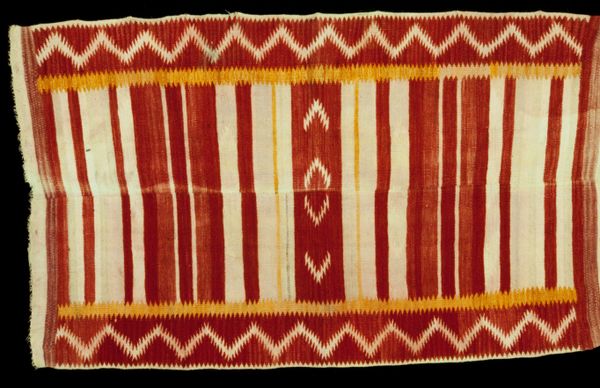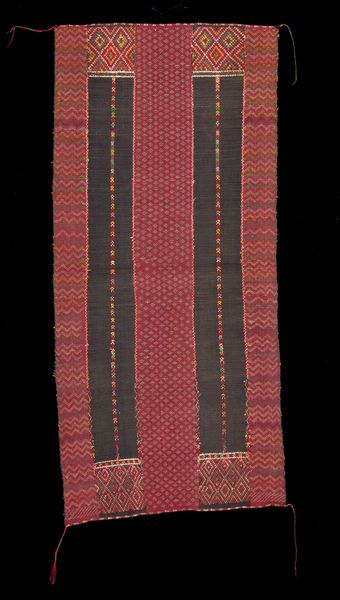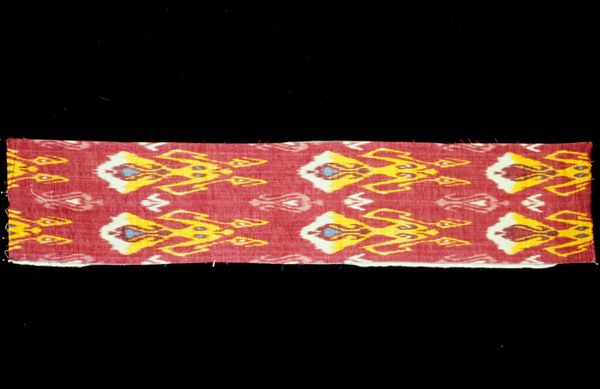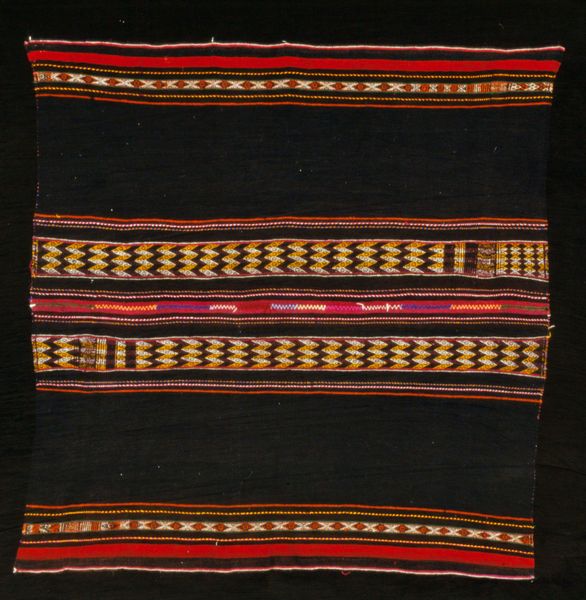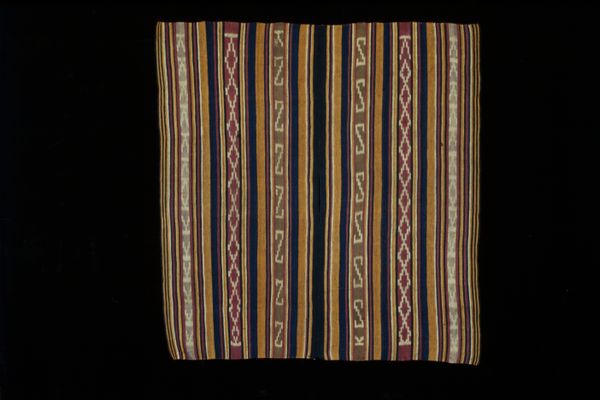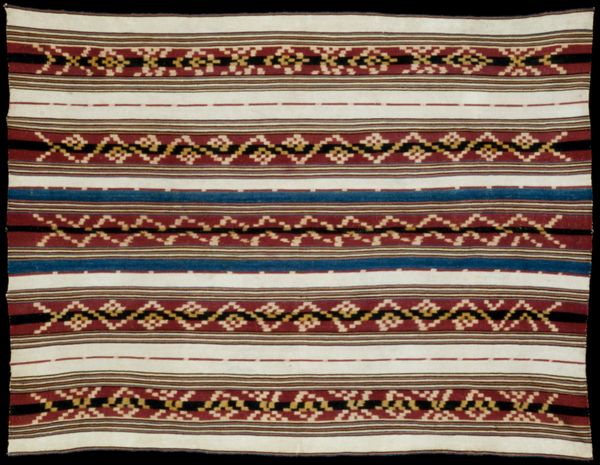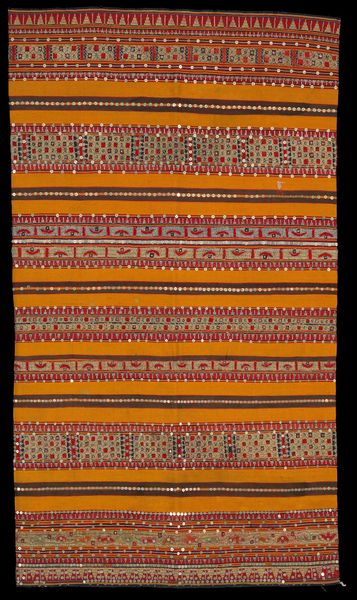
silk, weaving, textile, cotton
#
tribal design
#
silk
#
man-made pattern
#
asian-art
#
weaving
#
textile
#
geometric pattern
#
repetitive shape and pattern
#
minimal pattern
#
ethnic pattern
#
geometric
#
pattern repetition
#
cotton
#
layered pattern
#
funky pattern
#
combined pattern
Dimensions: 104 x 13 1/8 in. (264.16 x 33.3 cm)
Copyright: Public Domain
Curator: What strikes me first about this piece, titled "Chagsi pangkheb", dating from around the 20th century and residing here at the Minneapolis Institute of Art, is the raw energy of the patterns. The textile seems to pulse. Editor: Pulsing, yes, I can see that. It has a very bold and forthright presence. It looks simultaneously ancient and strikingly modern, perhaps due to the repetitive geometric motifs. How would you describe its compositional elements? Curator: We see bands of maroon interspersed with lines of ochre, off-white, and crimson, all culminating in tassels at each end. But what's most compelling is the all-over pattern, which utilizes a combination of cotton and silk, that pushes and pulls the eye. It invites decoding, like an ancient system of semiotic meaning-making. Editor: Thinking historically, textiles are rarely "just" textiles. Woven into these threads are narratives of cultural identity and social exchange. Does "Chagsi pangkheb" offer a lens into such contexts, perhaps revealing trade routes or markers of social status through material choices and aesthetic decisions? Curator: The strategic deployment of repeating shapes creates a unified yet visually engaging surface. Each motif, though small, contributes to the larger structural integrity of the whole piece. You begin to see subtle variations in hue and form and appreciate the artist's mindful approach to pattern design. Editor: I imagine the piece originally serving a functional purpose, but within a context imbued with cultural significance. I find myself curious about its role and what it meant to its maker. It reminds me of the power of textiles to communicate complex cultural values. Curator: Ultimately, "Chagsi pangkheb" is more than mere decoration; it represents a sophisticated use of abstraction and demonstrates an intimate understanding of the language of visual form. Editor: Precisely. Thinking about how art acts within culture and politics, textiles stand as everyday symbols of connection and heritage. Examining the intersection of form and history invites reflection on enduring patterns and enduring legacies.
Comments
No comments
Be the first to comment and join the conversation on the ultimate creative platform.


